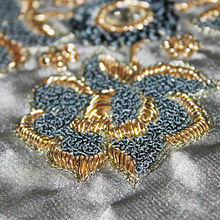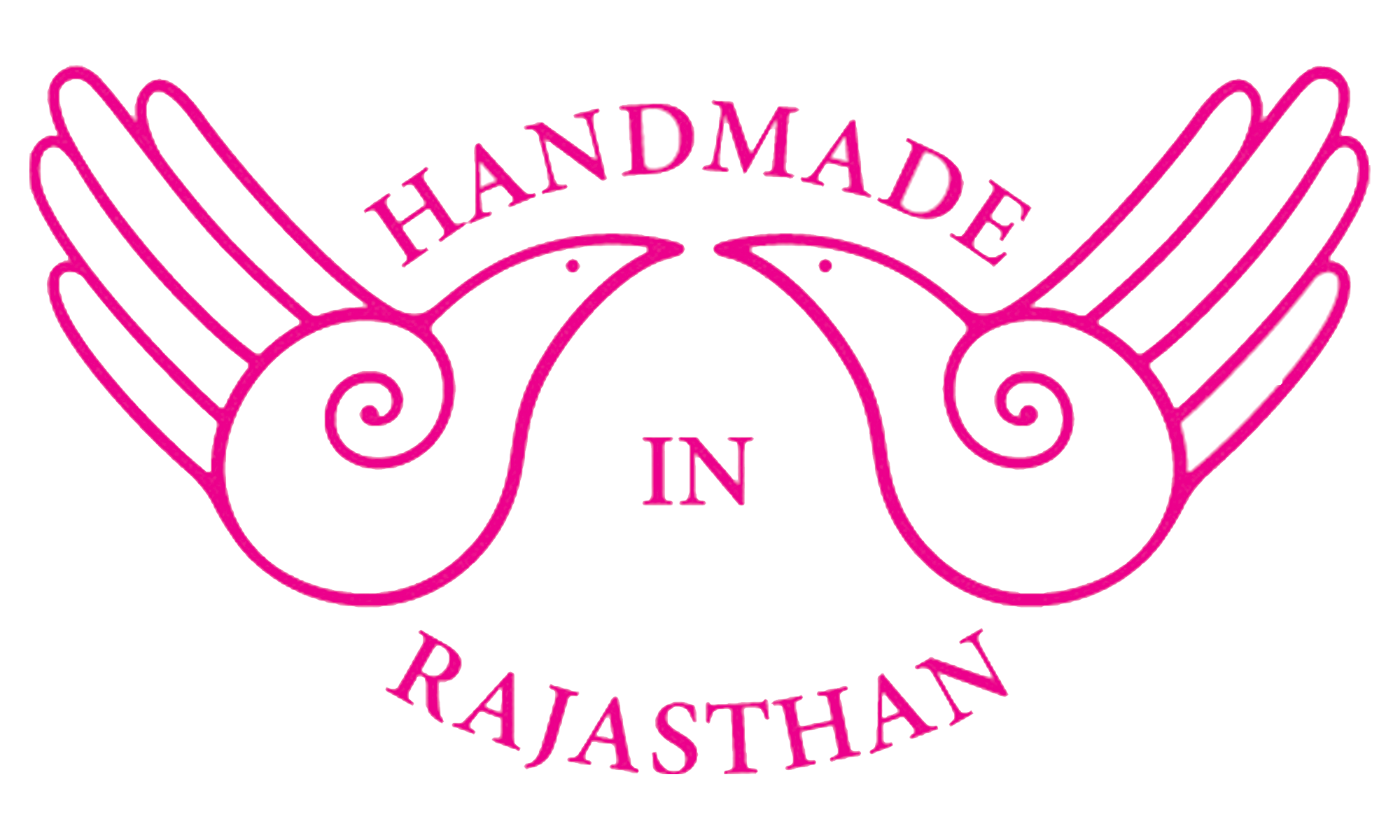- Home
- About US
- Art and Craft
- Artisans
- Master Crafts Persons
- Supporting Institutions
- News and Events
- Schemes
- Contact us
- Contact

Zardozi or Zari- The most opulent form of Indian embroidery is the Zari and the Zardozi, known since the late 16th century, brought in India by the Moghul invaders. The word Zardozi comes from the two Persian words Zar=gold and Dozi=embroidery. This form uses metallic thread.
Once real gold and silver thread was used, on silk, brocade and velvet fabric. Metal ingots were melted and pressed through perforated steel sheets to convert into wires, which then were hammered to the required thinness. Plain wire is called "badla:, and when wound round a thread, it is called "kasav". Smaller spangles are called "sitara" and tiny dots made of badla are called "mukais" or "mukesh".
Zardozi is either a synonym or a more elaborate version of zari where the gold or silver embroidery is embellished with pearls and precious stones, gota
and kinari, making this art only affordable by rich people. Nowadays Zardosi thread has a plastic core and a golden-coloured outside. The thread consists of coiled metal wires placed on the right side of the fabric and couched with a thinner thread.

